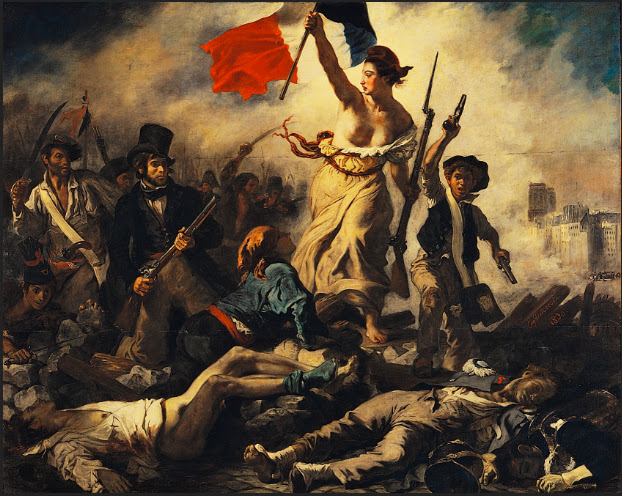Intermission, part 7
The narrative began with Act 1, scene 1 on April 10, 2013.
To access all scenes, scroll to blog archive at the bottom of the page.
This intermission attempts to track the connected artistic 'lineage' of some influential painters, from the early 15th century to the present. To follow this thread and to see all images mentioned,
go back to part 1 of this intermission.
This intermission attempts to track the connected artistic 'lineage' of some influential painters, from the early 15th century to the present. To follow this thread and to see all images mentioned,
go back to part 1 of this intermission.
Artists of the 18th and 19th centuries were deeply affected by the times in which they lived. The Enlightenment, revolutionary zeal, war, famine, oppression, the Industrial Revolution and the subsequent "shrinking" of the world (both people and ideas traveled faster than in previous periods), the bohemian life of artists largely set adrift by the old system of patronage by Church and State – all were conditions making art ripe for change. Free of the necessity of painting flattering portraits of the wealthy aristocracy, of making erotically amusing paintings – thinly-veiled as illustrations of biblical or mythological themes – for the same clientele (see, for example, Lucas Cranach the Elder), and altarpieces for the Church that had for centuries been financially aligned with the same aristocratic class, young politically astute artists turned inward to explore their own artistic ideas. The great Romantic painters took on politics as well as motifs related to more exotic times and places.
Eugène Delacroix, Liberty Leading the People, 1830
Théodore Géricault, The Raft of the Medusa, 1818-19
An interesting note about Géricault, considering our intergenerational interest in painters like Titian and Velazquez: "Géricault soon left the classroom, choosing to study at the Louvre instead, where (from 1810 to 1815) he copied from paintings by Peter Paul Rubens, Titian, Diego Velázquez, and Rembrandt. It was during this period at the Louvre, that he found a vitality which he preferred to the prevailing school of Neoclassicism." (http://deskarati.com/2011/12/16/theodore-gericault/).
Stepping back for a moment to review the artistic legacy we have traced to this point, at first glance it would seem difficult to connect the paintings of Barthélémy d'Eyck (1444-1469, blog post archive, July 20, 2013) with those of Géricault and Delacroix. However, if you take the time to retrace the influence trail we have explored, I think you'll find a fairly direct line of descent. As I previously have pointed out, that line might well be followed in other directions as well, where the branches of our "family" tree have diverged.

